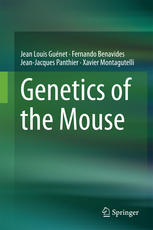

Most ebook files are in PDF format, so you can easily read them using various software such as Foxit Reader or directly on the Google Chrome browser.
Some ebook files are released by publishers in other formats such as .awz, .mobi, .epub, .fb2, etc. You may need to install specific software to read these formats on mobile/PC, such as Calibre.
Please read the tutorial at this link: https://ebookbell.com/faq
We offer FREE conversion to the popular formats you request; however, this may take some time. Therefore, right after payment, please email us, and we will try to provide the service as quickly as possible.
For some exceptional file formats or broken links (if any), please refrain from opening any disputes. Instead, email us first, and we will try to assist within a maximum of 6 hours.
EbookBell Team

4.8
44 reviewsThis book, written by experienced geneticists, covers topics ranging from the natural history of the mouse species, its handling and reproduction in the laboratory, and its classical genetics and cytogenetics, to modern issues including the analysis of the transcriptome, the parental imprinting and X-chromosome inactivation. The strategies for creating all sorts of mutations, either by genetic engineering or by using mutagens, are also reviewed and discussed in detail. Finally, a last chapter outlines the methodology used for the analysis of complex or quantitative traits.
The authors also discuss the importance of accurate phenotyping, which is now performed in the mouse clinics established worldwide and identify the limits of the mouse model, which under certain circumstances can fail to present the phenotype expected from the cognate condition in the human model. For each chapter an up-to-date list of pertinent references is provided.
In short, this book offers an essential resource for all scientists who use or plan to use mice in their research.